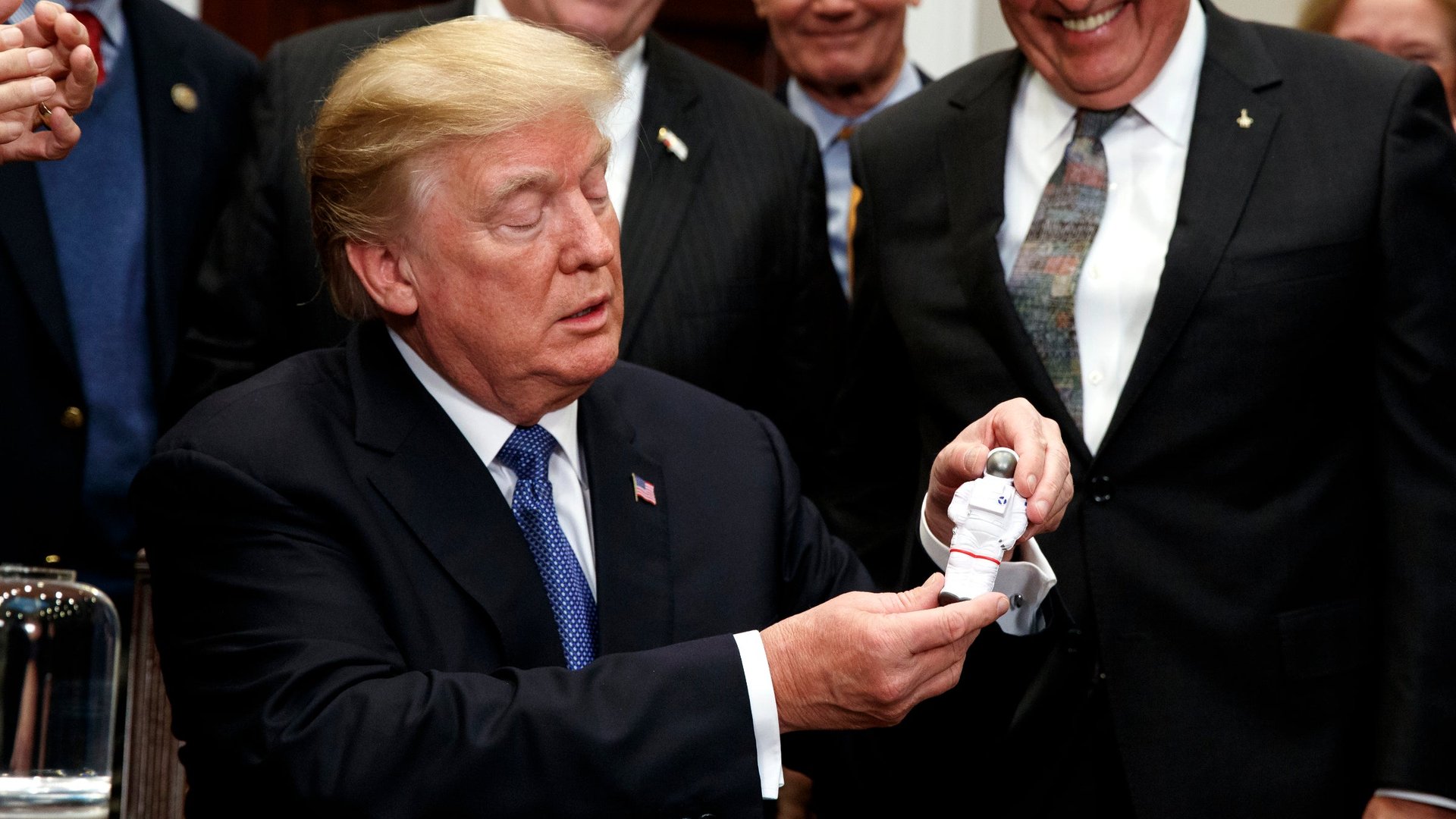Donald Trump added just 63 words to Barack Obama’s space policy
And he made it more nebulous.


And he made it more nebulous.
President Trump announced ambitious new plans for a mission to the moon yesterday, though White House officials didn’t respond to questions about whether the rhetoric would be matched by higher funding or re-prioritization of NASA’s existing plans.
“In signing this space policy directive, you are ensuring that America will lead in space once again,” Vice President Mike Pence told Trump yesterday. But the directive only slightly tweaked the Obama administration’s 2010 space overhaul. The entire directive replaces one paragraph in the 14 page National Space Policy (pdf), changing just one instruction to the NASA administrator.
As set by Obama, it was:
Set far-reaching exploration milestones. By 2025, begin crewed missions beyond the moon, including sending humans to an asteroid. By the mid-2030s, send humans to orbit Mars and return them safely to Earth;
Under Trump, it will be this:
Lead an innovative and sustainable program of exploration with commercial and international partners to enable human expansion across the solar system and to bring back to Earth new knowledge and opportunities. Beginning with missions beyond low-Earth orbit, the United States will lead the return of humans to the Moon for long-term exploration and utilization, followed by human missions to Mars and other destinations;
Note that Trump’s change doesn’t offer dates, but it does embrace the possibilities of public-private partnership and economic exploitation, both championed by the administration’s controversial pick to run NASA, Jim Bridenstine. Despite the re-establishment of a Pence-led National Space Council to overhaul the US government’s approach to space, the rest of the US government’s space policy is apparently ok for now.